Realizing Children’s Rights in St Lucia
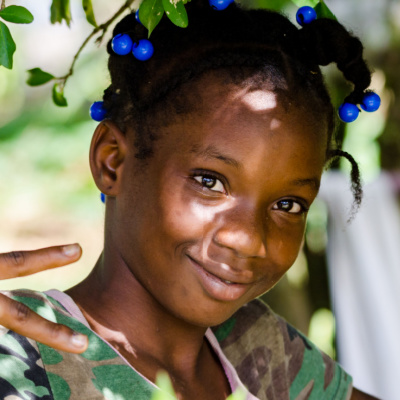
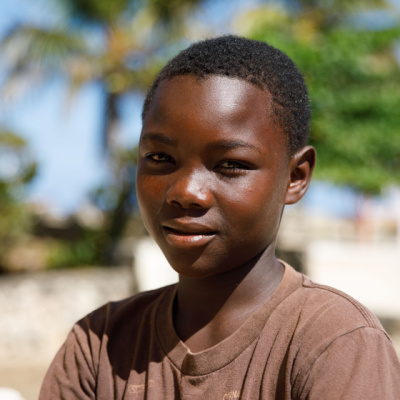
St. Lucia has ratified numerous international instruments for the protection of children’s rights. A significant majority of children in the country have access to basic necessities and receive free education up to the age of sixteen. Despite this, corporal punishment, child labour, child abuse and juvenile delinquency are longstanding challenges that remain to be addressed.

Children’s Rights Index: 7,78 / 10
Orange level: Noticeable problems
Population: 183,629
Pop. ages 0-14: 17.7%
Life expectancy: 76.20 years
Under-5 mortality rate: 15.31‰
St. Lucia at a glance
Saint Lucia is a small volcanic island located in the West Indies in the eastern Caribbean Sea, on the boundary of the Atlantic Ocean. It is the second largest island of the Windward Islands in the Lesser Antilles. It is located northeast of Saint Vincent, northwest of Barbados and south of Martinique. Castries is its capital city and largest port (Tolson et al, 2022).
Iouanalao, “Land of the iguanas,” is the island’s original name, coined by the Arawak Indians who were the original inhabitants dating back to 200AD. Later, in 800AD the Amerindians, also called the Caribs, took control of the island and named it Hewanorra, “there were iguanas found”. In the 16th century, following the arrival of European colonizers, the country gained its current name (National Geographic, 2020).
Saint Lucia is a constitutional monarch with the British monarch as the head of State. It is represented by a governor-general. The bicameral parliament is made up of the House of Assembly and the Senate (Tolson et al, 2022).
Mount Gimie, the highest point on the island, sits 3,145 feet above sea level (959 meters). On the southwestern side of the Island lie Gros (2,619 feet/798 meters) and Petit Pitons (2,460 feet/750 meters), also known as the “Pitons”, which are two volcanic mountains near the town of Soufriére (Tolson et al, 2020). The Pitons are regarded as a UNESCO world heritage site.
The natural environment of Saint Lucia is varied, ranging from mountains and rainforests to coral reefs and volcanic sand beaches. The island is 27 miles (43 kilometres) long and 14 miles (23 kilometres) wide. The island is famous for its diverse birdlife, with the Saint Lucia Parrot (the Amazona Versicolor), as its national bird. There are over 160 bird species that live on the island, and more than 45 species living in the rainforests which host three species of hummingbird including the Green-throated Carib, the Purple-throated Carib and the Antillean Crested Hummingbird (National Geographic, 2020).
The island is also home to a plethora of marine life and reptiles, including three species of sea turtles: green sea turtles, hawksbill turtles and leatherback turtles. The Saint Lucian whiptail lizard, discovered in 1958, is regarded as one of the rarest lizards in the world (National Geographic, 2020).
The Saint Lucian economy has been built on sugarcane, its chief crop, and bananas, its principal crop. Other natural crops on the island include coconuts, citrus fruits, cacao, cassava, yams and various spices (Tolson et al, 2022). The island’s chief exports are clothing, coconut products, cardboard cartons, bananas and electronic goods and their major trading partners includeBarbados, Dominica, Trinidad and Tobago, the United States and the United Kingdom (Tolson et al, 2022).
Status of children’s rights [1]
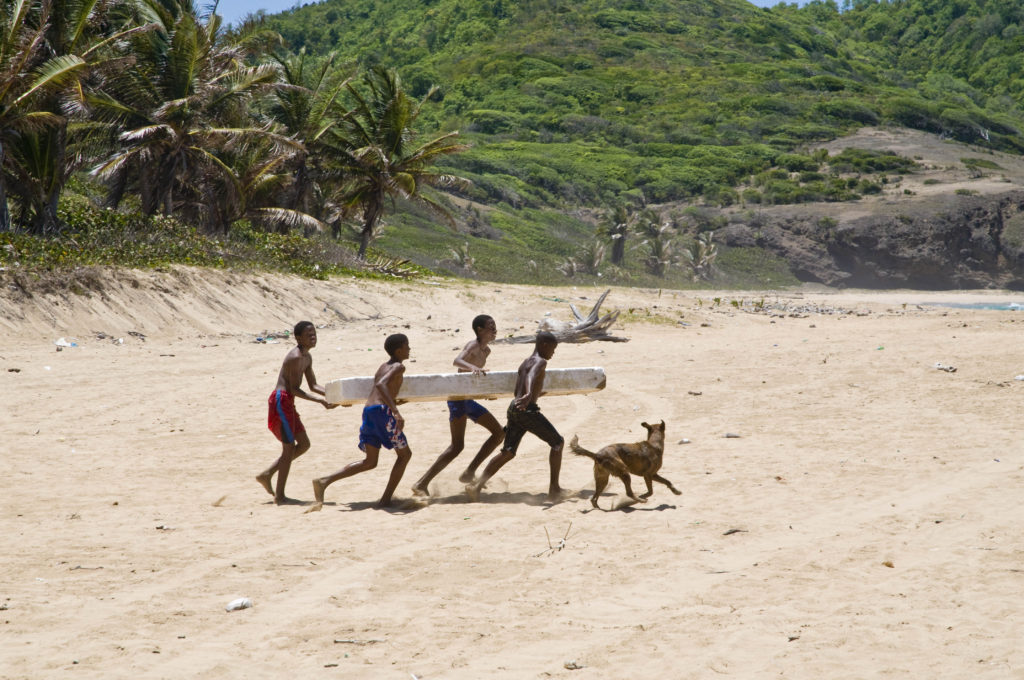
Saint Lucia has committed to several international instruments for the protection of children’s rights. In 1993, the government ratified the Convention on the Rights of the Child (CRC). Saint Lucia is also party to other international human rights instruments including the Convention on the Elimination of All Forms of Discrimination against Women (CEDAW) which was ratified in 1982, the International Convention on the Elimination of All Forms of Racial Discrimination in 1990 and the International Covenant on Civil and Political Rights in 2011.
The government ratified the Optional Protocol to the Convention on the Rights of the Child on the involvement of children in armed conflict in 2014 and on the sale of children, child prostitution and child pornography in 2013. Saint Lucia has ratified the International Labour Organization (ILO) Worst forms of Child Labour Convention, 1999 (No. 182).
Saint Lucia is a member of the Organization of American States (OAS) and is bound to the Inter-American System of Human Rights. In 1995, the government ratified the Inter-American Convention on the Prevention, Punishment, and Eradication of Violence against Women (known as the Belém do Pará Convention).
Nationally, the government has taken steps to protect children through the Constitution of Saint Lucia, the Children and Young Persons Act 2001, the Family Court Act 2001, the Criminal Code 2003, the Domestic Violence Act 2005, the Protocol for the Management of Child Abuse and Neglect in Saint Lucia and the Counter Trafficking Act 2010 (UNICEF, 2017).
Addressing the needs of children
Right to education
In Saint Lucia, under the Ministry of Education, the Education Act 1999 (as amended in 2005) is the main regulatory framework governing education from the primary level through to the tertiary level. Primary school education is compulsory and formal school age ranges from five to fifteen years old (Global Education Monitoring Report, 2021).
Primary education in Saint Lucia consists of a three-year infant programme, followed by four years of primary school. Once children have completed grade seven, they are required to take the Common Entrance Examination (CEE). The results from this examination period, determine placement for additional compulsory schooling (Sheldon, 2022).
Students who successfully pass the CEE exams transition into secondary school where they complete five years of education. Under the 1997 Saint Lucia Education Act, all students are required to stay in school till the age of sixteen. Therefore, for students who were not successful in the CEE exams, they transition into a three-year senior primary programme which is centred on preparing students for vocational jobs. This legal framework was set in place to ensure that children stay in school until they have reached the legal working age (Sheldon, 2022).
Across the island, there are 150 pre-schools, 33 day-care centres, 75 primary schools and 24 secondary schools. As of 2019, the school attendance rate for children aged between 3 and 5 was 95% (Government of Saint Lucia, 2019).
Regionally, there are four legal frameworks that guide educational development and standards in the region, namely: (1) Regional Policy on Gender Equality and Social Justice 1995; (2) Education for All in the Caribbean: A plan of Action for 2000-2015; (3) The Regional Framework for Action on Children 2012-2015 and (4) The Montego Bay Declaration. Nationally, education is governed by the Education Act 2005 which regulates early childhood to tertiary education (UNICEF, 2017).
Right to health
The government has made many advances to promote children’s right to health and improve the quality of health care available, through the Child and Adolescent Health Programme and the Health and Family Life Education curriculum (HFLE). The HFLE is a life skills-based programme that is a part of primary and secondary school curriculums that covers the topics of interpersonal relationships, sexuality, sexual health, fitness and eating (Committee on the Rights of the Child, 2014).
The government has also made improvements to the mental health care system with the establishment of the Saint Lucia Mental Health Wellness Centre. However, despite the establishment of the wellness centre, there remains a shortage of specialists to address children’s mental health and outpatient services for psychological rehabilitation, especially for depression and suicide cases (Committee on the Rights of the Child, 2014).
Right to clean water and sanitation
According to the UNICEF Situational Analysis of Saint Lucia in 2017, 94% of people living in Saint Lucia had access to clean drinking water from an improved water source and 65% had access to basic sanitation services in 2010 (UNICEF, 2017).
Right to identity
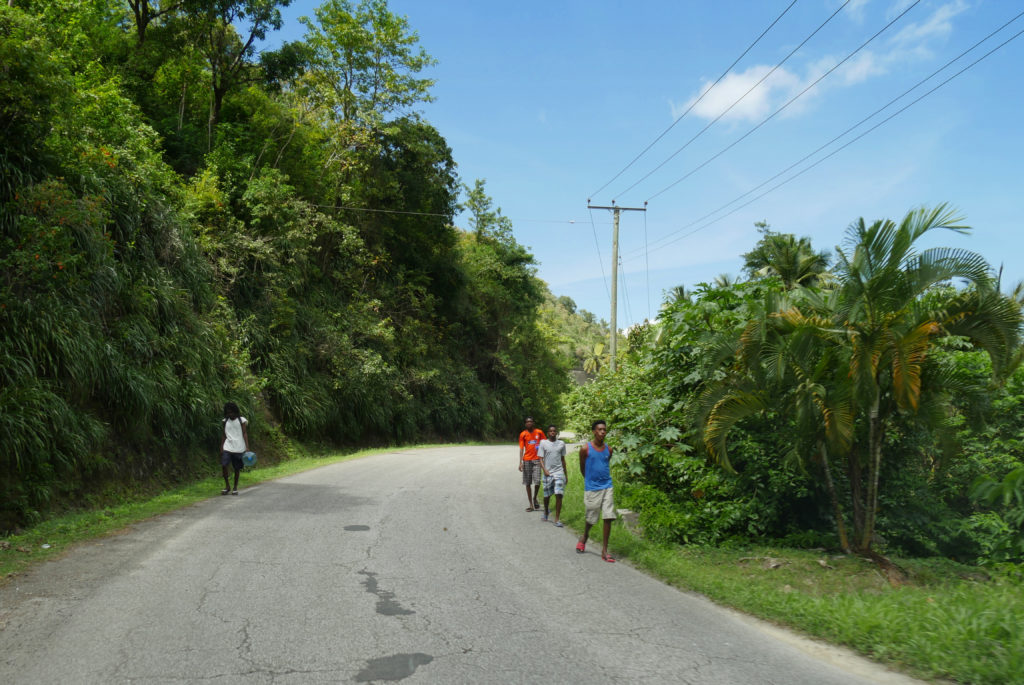
In Saint Lucia, under the Child Status Act, all children are meant to be registered within 21 days of their birth, where the name of the child is recorded. In 2011, the Ministry of Legal Affairs estimated that 14,959 children between the ages of 1 – 18 years old had incomplete birth registration records where information was either missing or incorrect.
Due to this, the Ministry launched a Rectification Fair, which provided support across the island to promote correction to birth registrations. It was estimated that as of August 2014, there were 12,339 children who had their first name missing on their birth certificates (63% were girls and 37% boys) (UNICEF, 2017).
Risk factors 🡪 Country-specific challenges
Sexual exploitation
In Saint Lucia, under the Ministry of Equity, Social Justice and Empowerment, the Division of Human Services (DHS), formed in 1993, is responsible for the protection of all children from all forms of abuse and neglect, and advocates for juvenile and human rights issues (UNICEF, 2017).
In 2020, there were 60 suspected cases of commercial sexual exploitation. Of these cases, 19 were referred to the Division of Human Services and the police as suspected cases of child sex trafficking. Under the Child Justice Act, the police investigated 30 cases of commercial sexual exploitation of children. However, barriers exist in effectively investigating these crimes. Police have insufficient resources, transportation, equipment and funding, inhibiting the comprehensive enforcement of child labour laws (US Department of Labour, 2020).
Sexual violence and child abuse
Between 2010 and 2015, there were 1,341 reported cases of child abuse in Saint Lucia. Of these cases, approximately 70% of the victims were girls, and many of them (29 out of 103 reports) were victims of incest. The most common form of abuse reported was sexual abuse (34%), physical abuse (32%), neglect and abandonment (28%). More than half of the perpetrators were known to the victims with fathers and uncles accounting for 20%, and other reported perpetrators including stepfathers, brother in-laws and cousins (UNICEF, 2017).
Despite an overwhelming number of child abuse cases, the government has made efforts to protect children through programmes and good practices which include: (1) Child Victim Witness Programme, which is operated by the Family Court and prepares children for their role in giving evidence in court; (2) Break the Silence, an advocacy campaign targeting adults, children and key actors; and (3) Positive parenting, developed by DHS in order to strengthen parents’ sense of responsibility and ability to protect their children. The main aim of this programme was to enforce positive parenting skills by unlearning negative emotional and physical behaviours that cause harm to children (UNICEF, 2017).
Corporal punishment
In Saint Lucia, corporal punishment is lawful in the home, in alternative care settings, in day care, schools and penal institutions. Article 5 of the Children and Young Persons Act 1972 confirms “the right of any parent, teacher or other person having the lawful control or charge of a child to administer reasonable punishment to him” (End Violence Against Children, 2021).
In a school setting, corporal punishment is permitted under Article 5(6) of the Children and Young Persons Act 1972 and Article 50 of the Education Act 1999. Within schools, corporal punishment “may be administered when no other punishment is considered suitable or effective” and this is only permitted by the school principal, deputy principal or an appointed teacher.
The punishment must be recorded in a “punishment book” which is kept at the schools to keep a record of the nature and extent of the punishment that was administered (End Violence Against Children, 2021). UNICEF statistics from 2012, found that 68% of children aged 2-14 in Saint Lucia experienced violent discipline in the home, 44% experienced physical punishment and 60% experienced psychological aggression (End Violence Against Children, 2021).
Saint Lucia, being a part of the Organization of Eastern Caribbean States (OECS), took part in an initiative to reform child protection laws. Namely, the Children (Care and Adoption) Bill 2007 which would protect children from abuse but not from corporal punishment (End Violence Against Children, 2021).
In the 2011 Universal Periodic Review, the government stated that corporal punishment was a part of Saint Lucian culture and that “prohibiting it in schools and eradicating it in the family is a formidable challenge.” The government rejected all recommendations that were made to pursue alternative forms of discipline (End Violence Against Children, 2021).
During the 2015 Universal Periodic Review, the government identified corporal punishment as a taboo subject and acknowledged that it had not been addressed adequately. Despite the government’s willingness to prohibit corporal punishment, there has been no indication of any proposed reforms. For example, through the Constitutional Reform Project, the government committed to the Domestic Violence Bill and the Child Justice Bill but both Bills did not indicate the prohibition of corporal punishment (End Violence Against Children, 2021). In January 2019, the Ministry of Education, Innovation, Gender Relations and Sustainable Development publicly declared their intention to abolish corporal punishment in schools (Government of Saint Lucia, 2019).
Child labour
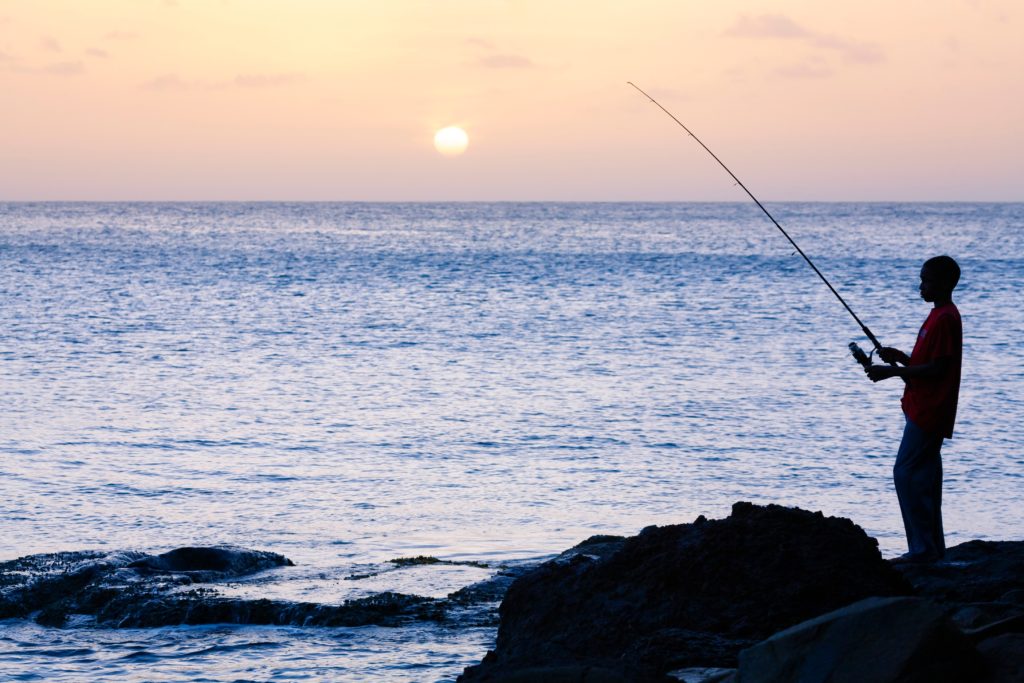
In 2020, the government made minimal advances to eliminating child labour in Saint Lucia. However, the government launched a study to access economically vulnerable communities across the island. This study aimed to provide recommendations on the most effective ways to support vulnerable communities. Through this study, the Trafficking in Persons Task Force used social media platforms to raise awareness on issues related to child trafficking (US Department of Labour, 2020).
Despite the ratification of international conventions concerning child labour such as the International Labour Organization (ILO) Worst forms of Child Labour Convention, 1999 (No. 182), Saint Lucian legal frameworks do not adequately protect children from the worst forms of child labour (US Department of Labour, 2020). Although very limited data and research exists on the scale and magnitude of child labour in Saint Lucia, reports from 2020 demonstrate that children are subjected to the worst forms of labour. Children are subjected to labour in the services sector, selling food and handicrafts in local markets and street vending and commercial sexual exploitation (US Department of Labour, 2020).
The government funded and participated in social programmes to eliminate child labour in 2020. Most of these social programmes focused on increasing school attendance and promoting children’s access to education. For example, the Koudmen Sent Lisi program funded textbook rentals, school meal programmes and a transportation subsidy programme for a majority of secondary schools on the island (US Department of Labour, 2020).
Juvenile justice
St. Lucia’s juvenile justice sector is small, with few institutions working to protect children’s rights. Functionally, the Child Protection Services Unit is the first port of call for children battling behavioural challenges, while the Family Court hears cases on child protection and juvenile justice in accordance with the Family Court Act (1994). The court is authorised to provide legal and social service interventions for children facing risks of abuse or those in contact with the juvenile justice system (UNICEF, 2017).
The structure of St. Lucia’s juvenile justice architecture fails to differentiate between delinquent children and those experiencing behavioural challenges. Children who face school absences due to abuse, for example, can be categorised in the same way as ‘deviant children’ who require closer monitoring. Children can, however, be referred to the Probation Department for ‘care and protection’ if their life circumstances are challenging (UNICEF, 2017).
In 2010, the Ministry of Home Affairs and National Security, supervised by the Probation and Parole Services, established a Court Diversion Programme to steer children away from crime and reduce recidivism. The scheme was primarily targeted at children aged 12-19 and attempted to instil children with more positive attitudes towards relationships and adversity, as well as independent life skills. The programme was discontinued in 2016 following the conclusion of its funding period (UNICEF, 2017).
St. Lucia lacks a centralised digital system for the collation and management of data on children’s interaction with the criminal justice system. There is limited up-to-date research on child protection matters in the country, and agencies need to work closely together to produce cohesive information. Data from 2012-2014 stated that 345 boys and 101 girls had been charged with criminal offences: around 50 children per 100,000. The Court Diversion Programme heard 63 juvenile referrals from 2011-2014. The most common juvenile offences in St. Lucia are theft, assault, drug-related charges and trespassing (UNICEF, 2017).
Written by Vanessa Cezarita Cordeiro
Internally proofread by Aditi Partha
Last updated on 21 August 2022
References:
[1] This article by no means purports to give a full or representative account of children’s rights in St. Lucia; indeed one of many challenges is the scant updated information on the children in St. Lucia, much of which is unreliable, not representative, outdated or simply non-existent.

